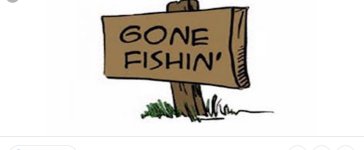Didnt get to the lake, wife put my butt in the garden. Plan on planting corn this friday or sat if it dont rain.
Did take the time to draw up the geometry of the pitman arm and cyl connections for turning the axle. Didnt take a pic of doing this, but I think I want to explain How I do it. Maynot be the best way, but its the only way I have found to work consistantly. Plus all it takes is a scrap piece of wood and a tape measure and a drill.
First thing you need to know is the retracted lenght of the cyl you plan to use. Then the extended lenght. This will give you the total stroke. In my case, TS is 6 1/4 inches. In order to turn the axle 180 degrees. I can use the 6 1/4 stroke as the dia of the circle the pitman arm needs to make. I then take a framing square and draw a Large "T" on my welding table. The spot where the top of the T meets the upright portion is now my center of the Pitman arm. Since my stroke is 6 1/4 inchs, I measure out half that distance on the cross part of the T using the now established center point of the turning radius. I then take a paint stick, for lack of anything better, and drill a hole to use as the base and rod ends centers of the cyl. I make three holes, The base to rod at fully retractment and base to rod end fully extended. I then center the rodend full retracted measurement on the outer mark of the top of the T and use a pencle in the base end hole and use the paint stick as a protractor and draw a circle. Once The circle is drawn, I place the rod end hole fully extended on the opposite T marm and with pencle in base end, I draw another circle. Where the two circles cross is where the base of the cyl is mounted. If mounted this way, with cyl shaft centered in its stroke range, the boom will be at 90* or in line with the leg portion of the "T" and fully extended it will turn 90* ,inline with the Cross of the T and fully retracted, again 90*, inline with the cross of the "T. If you are using 2 cyl to turn the boom, when drawing your circles, just make full circles and the lines will cross again on the opposite from the first crossing and this is where you would mount the base of the second cylinder. If you dont want both rod ends of the cyl on the same pin you can make your steering arm long enough that you can mount your second cyl on the opposit side of the first cyl. Just start drawing circles again to figure out eh second cyl mount.Then plumbing you can make one cyl push and one cyl pull at the same time. Word of caution, If anything is hanging below the pitman/steering arm. there is a chance your cyl will hit it when fully extended, so it is best if you make your cyl rod mounts below the steering arm and not straddle the arm, as in a clevis. Also, if you are off just a little bit on your measurements, there is a chance your cyl will extend or retract more than is necessary to get the full 180 turn. If this happens, the cyl can cam over and try to turn the boom to far or not far enough creating binding when you want to change direction of the boom. You can also increase the dia of the steering arm to decrease turn radius, I just play with the numbers until I get the amount of turn I want. A compass comes in handy for doing that.

